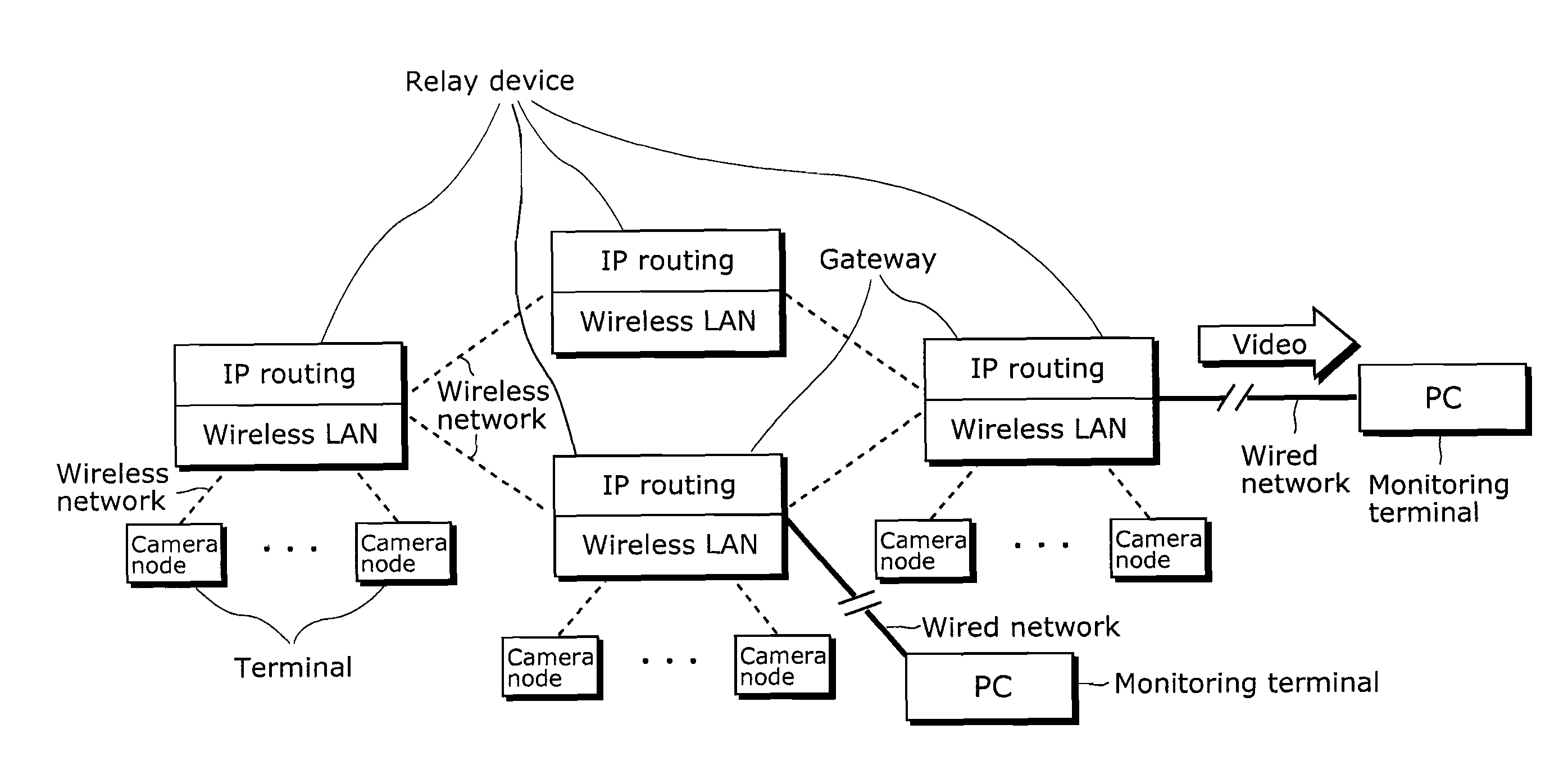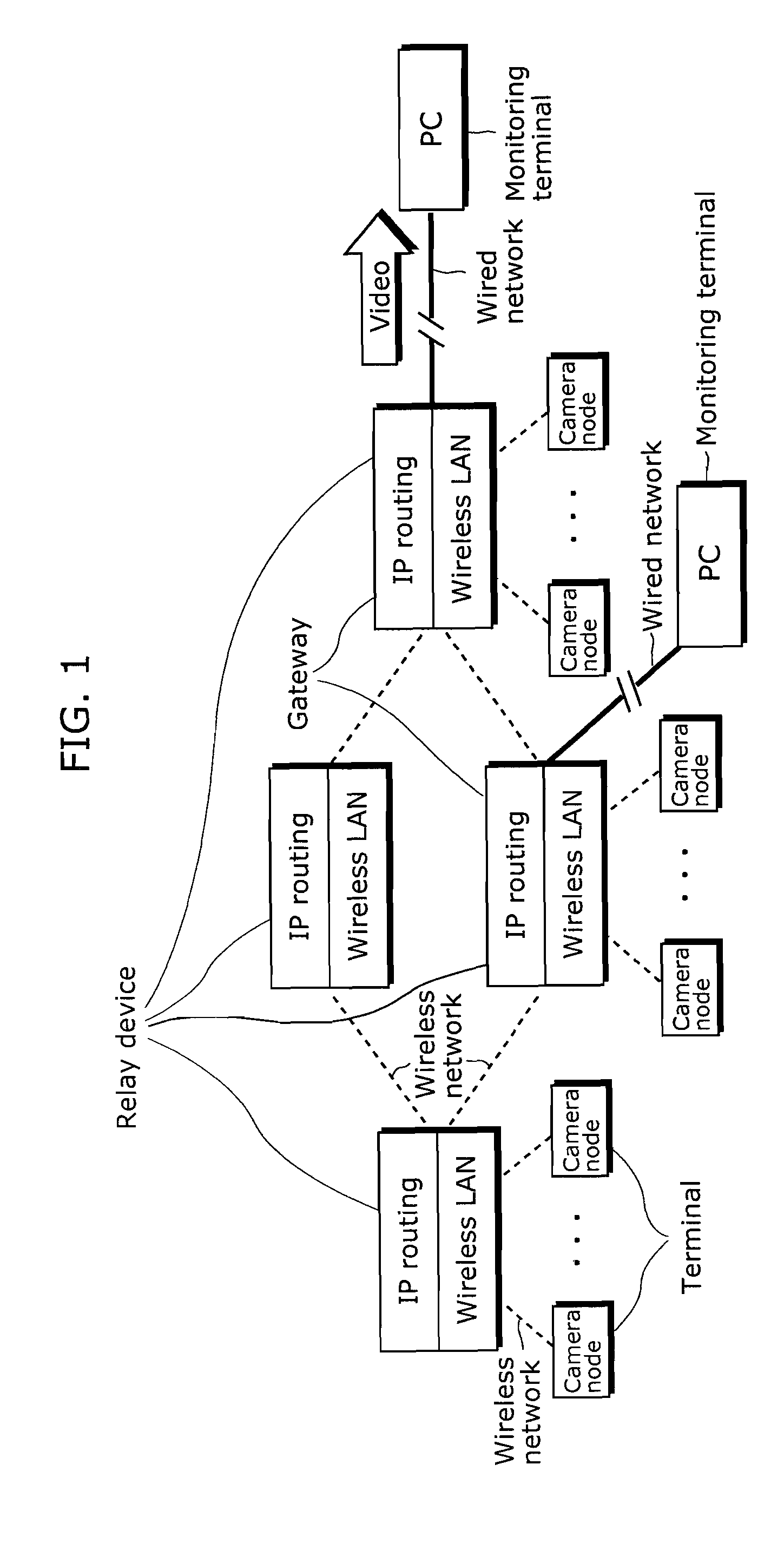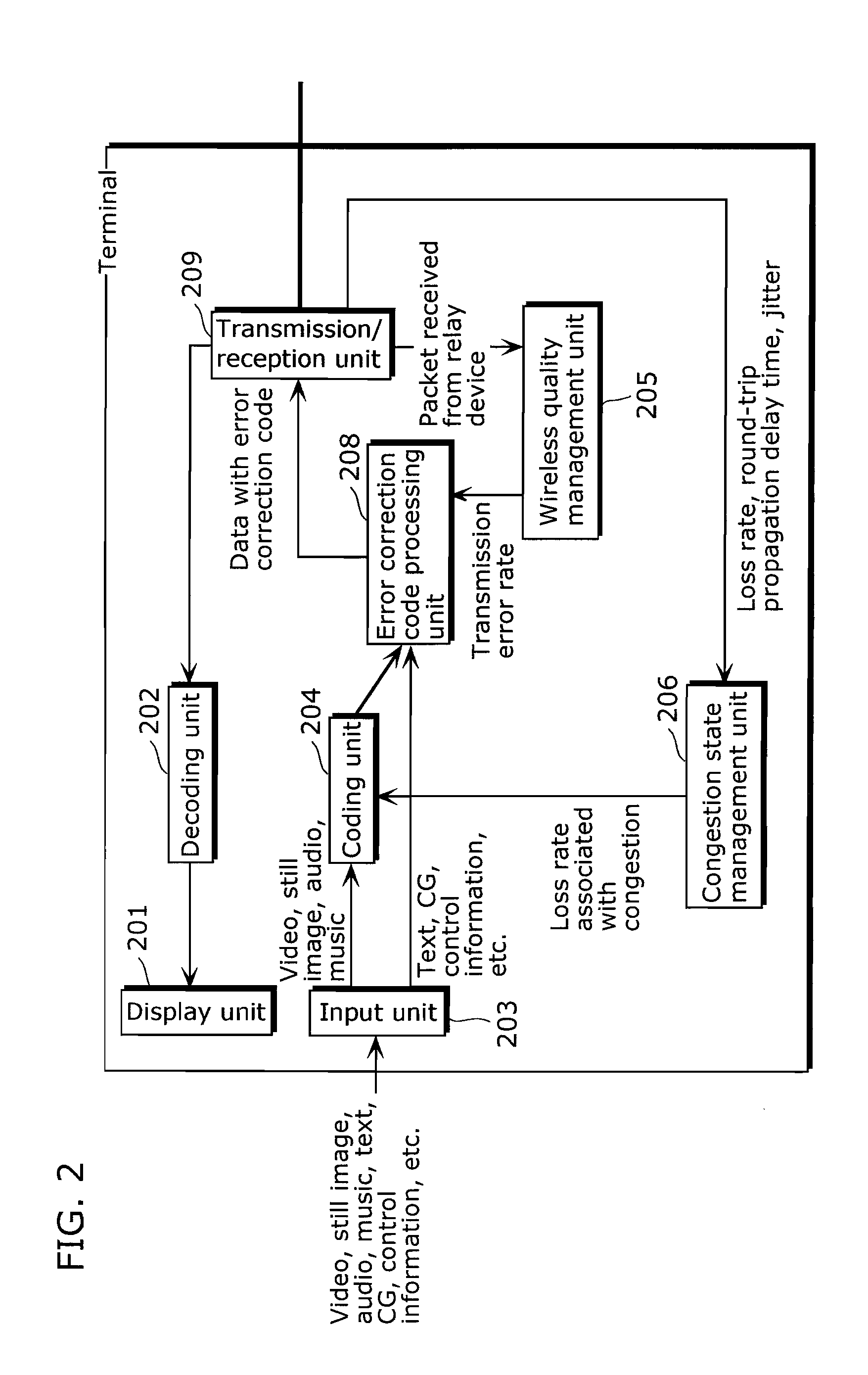Relay transmission device and relay transmission method
a relay transmission and relay technology, applied in the field of relay transmission devices, can solve problems such as data loss, transmission error, and congestion, and achieve the effects of reducing packet loss caused by packet overflow of buffers in relay devices, reducing congestion in ad hoc networks, and reducing packet loss
- Summary
- Abstract
- Description
- Claims
- Application Information
AI Technical Summary
Benefits of technology
Problems solved by technology
Method used
Image
Examples
examples
[0453]FIG. 21 is an explanatory diagram of specific examples of transmission amount control for self-optimization and total optimization based on Expression 14 (Expressions 7 and 13), and assumed conditions of these examples.
[0454]A first example relates to a method of suppressing an imbalance in data remaining amount between transmission buffers in the present relay device (self-optimization) and suppressing an imbalance in data remaining amount between transmission buffers of the present relay device and its cooperative party (total optimization), by adjusting a transmission amount of each transmission buffer through scheduling based on Expression 14 (Expressions 7 and 13).
[0455]In the self-optimization of the first example, scheduling (transmission amount) is adjusted by using a data remaining amount of each transmission buffer in the present relay device as a present relay device transmission buffer state.
[0456]In the total optimization of the first example, scheduling (transmis...
first example
Transmission Amount Control by Scheduling
[0468]FIG. 22 is an explanatory diagram of a method of adjusting a transmission amount by transmission buffer scheduling.
[0469]As the method of transmission amount adjustment by transmission buffer scheduling, a method such as Weighted Round Robin (WRR) can be used to adjust the amount of data transmitted from each transmission buffer.
[0470]WRR is a method of adjusting transmission amount xn,i of each transmission buffer in accordance with weight wn,i assigned to the transmission buffer.
[0471]In FIG. 22, when an amount of data transmitted from relay device n is denoted by xn,i an amount of data transmitted from each transmission buffer is obtained by dividing transmission amount xn in proportion to weight wn,i assigned to each transmission buffer.
[0472]Accordingly, control of transmission amount xn,i by scheduling can be realized by adjusting weight wn,i of each transmission buffer based on the control expressions of Expressions 7 and 13.
[047...
second example
Transmission Amount Control by Packet Discard
[0515]FIG. 23 is an explanatory diagram of packet discard in a transmission buffer.
[0516]The adjustment of the buffer remaining amount of each transmission buffer in the relay device can be achieved not only by controlling the data transmission amount, but also by using a packet discard method such as Random Early Detection (RED).
[0517]RED is a technique of randomly selecting a packet in a transmission buffer and discarding the selected packet in advance by adjusting discard rate y in accordance with a buffer remaining amount (time average) of the transmission buffer, to thereby avoid congestion.
[0518]FIG. 23 is a graph showing a relation between the buffer remaining amount (time average) of the transmission buffer and the probability of packet discard (packet discard rate) by RED.
[0519]In FIG. 23, the horizontal axis represents the buffer remaining amount (time average) of the transmission buffer in the relay device, and the vertical axi...
PUM
 Login to View More
Login to View More Abstract
Description
Claims
Application Information
 Login to View More
Login to View More - R&D
- Intellectual Property
- Life Sciences
- Materials
- Tech Scout
- Unparalleled Data Quality
- Higher Quality Content
- 60% Fewer Hallucinations
Browse by: Latest US Patents, China's latest patents, Technical Efficacy Thesaurus, Application Domain, Technology Topic, Popular Technical Reports.
© 2025 PatSnap. All rights reserved.Legal|Privacy policy|Modern Slavery Act Transparency Statement|Sitemap|About US| Contact US: help@patsnap.com



